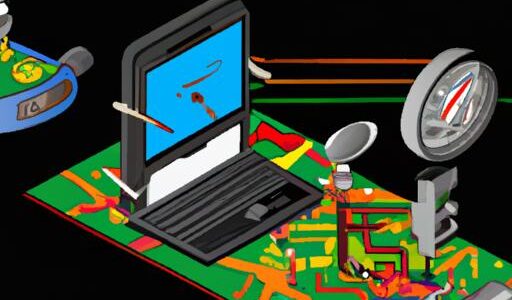Introduction
GPS, or Global Positioning System, has become an integral part of our daily lives, revolutionizing the way we navigate and interact with the world around us. This sophisticated technology, once reserved for military use, now permeates various aspects of civilian life. By utilizing a network of satellites orbiting the Earth, GPS enables us to pinpoint our exact location with remarkable precision.
The significance of GPS extends far beyond simple navigation. From guiding us to our destination on a road trip to tracking valuable assets in logistics, GPS plays a pivotal role in enhancing efficiency, safety, and convenience. As we delve deeper into the realm of GPS technology, we uncover a world of possibilities that have reshaped the way we perceive space and time. Join me on this enlightening journey as we unravel the mysteries of GPS and its profound impact on society.
History of GPS
Origins of GPS Technology
GPS technology traces its roots back to the Cold War era when the United States Department of Defense sought to develop a reliable navigation system for military purposes. In the 1970s, the concept of a global satellite-based positioning system began to take shape, laying the foundation for what would eventually become the GPS we know today.
Development of GPS Satellites
The deployment of the first GPS satellite, Navstar 1, in 1978 marked a significant milestone in the development of the system. Over the following decades, the constellation of GPS satellites expanded, providing greater coverage and accuracy. With each new satellite launched into orbit, the capabilities of GPS continued to improve, revolutionizing the way we navigate and interact with the world.
How GPS Works
Explanation of the GPS System
GPS operates on a straightforward principle: utilizing signals from satellites to determine an individual’s precise location on Earth. The system comprises a constellation of satellites orbiting the planet, constantly transmitting signals that are intercepted and processed by GPS receivers. These receivers calculate the time it takes for signals to travel from satellites to the receiver, enabling them to pinpoint the user’s location through a process known as trilateration.
Role of Satellites in Determining Location
Satellites act as the cornerstone of the GPS system, serving as beacons in space that broadcast signals to Earth. By receiving signals from multiple satellites simultaneously, GPS receivers can triangulate their position with exceptional accuracy. The more satellites a receiver can detect, the more precise the location determination becomes, allowing users to navigate with confidence and reliability.
Triangulation Method Used by GPS Receivers
The triangulation method employed by GPS receivers involves measuring the distance between the receiver and at least three satellites. By utilizing the known positions of these satellites and the time it takes for signals to travel, the receiver can calculate its exact location on Earth’s surface. This intricate process of triangulation forms the foundation of GPS technology, enabling users to access real-time positioning information and navigate seamlessly in a fast-paced world.
Applications of GPS
Navigation and Mapping
GPS technology has revolutionized the way we navigate our world, providing real-time guidance and accurate mapping services. Whether you’re exploring a new city or hiking through remote terrain, GPS ensures you never lose your way. With turn-by-turn directions and detailed maps at your fingertips, getting from point A to point B has never been easier.
Tracking and Monitoring
In the realm of logistics and transportation, GPS plays a crucial role in tracking vehicles, shipments, and personnel. By equipping assets with GPS devices, businesses can monitor their movements in real-time, optimize routes, and ensure timely deliveries. Additionally, GPS tracking enhances security measures by enabling rapid response in case of emergencies or theft.
Timing and Synchronization
Beyond navigation, GPS serves as a global timekeeping system, providing precise timing information to synchronize activities across various sectors. From financial transactions to telecommunications, industries rely on GPS for accurate time stamps and coordination of operations. This synchronization ensures seamless communication and efficient workflow management.
Geotagging and Location-Based Services
In the era of digital innovation, GPS enables geotagging, a feature that attaches location data to photos, social media posts, and other digital content. This geospatial information enhances the relevance and context of online experiences, allowing users to discover nearby attractions, businesses, and events. Location-based services leverage GPS data to offer personalized recommendations and tailored experiences based on your geographical location.
Conclusion
As we conclude our exploration of GPS technology, it becomes evident that GPS has become an indispensable tool in our modern world. From guiding us on our daily commutes to enabling advanced tracking and monitoring systems, GPS has transformed the way we navigate and interact with our surroundings. Its impact reaches far beyond mere convenience, revolutionizing industries and enhancing our overall quality of life.
Looking ahead, the future of GPS technology holds exciting possibilities. With ongoing advancements in satellite technology and data processing, we can expect even greater accuracy and reliability from GPS systems. As we continue to push the boundaries of innovation, GPS will undoubtedly remain a cornerstone of modern society, shaping the way we navigate, communicate, and connect with the world around us. Let us embrace the boundless potential of GPS technology as we venture into a future where precision and efficiency are key.
